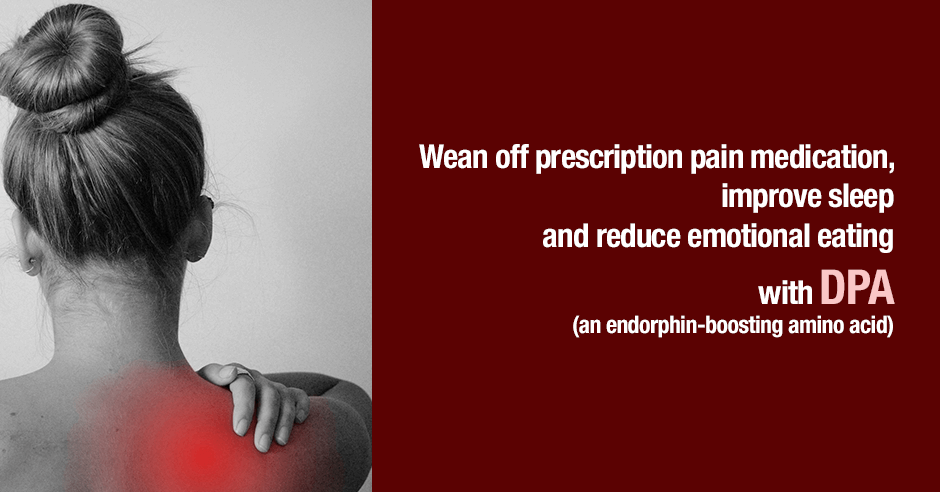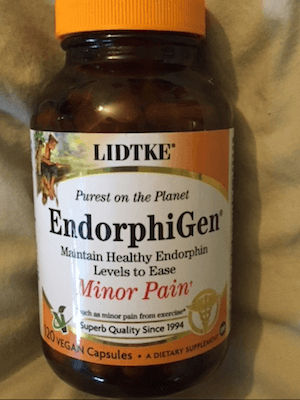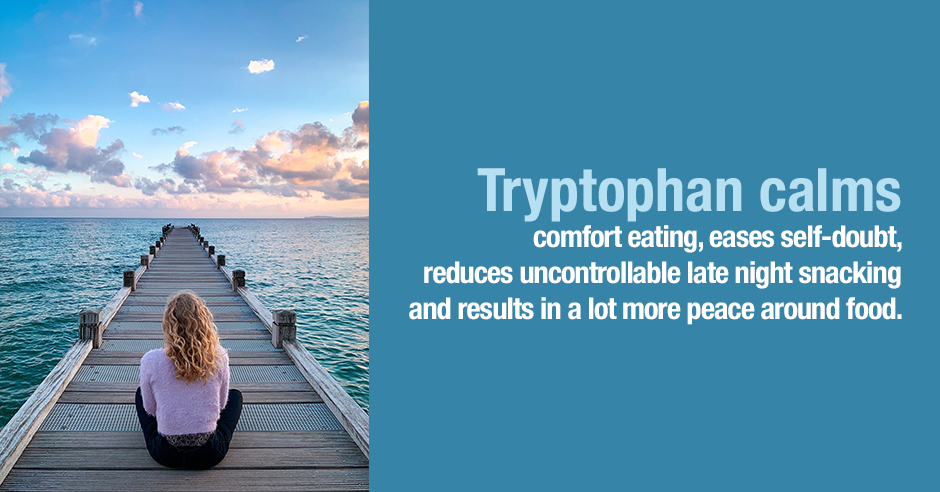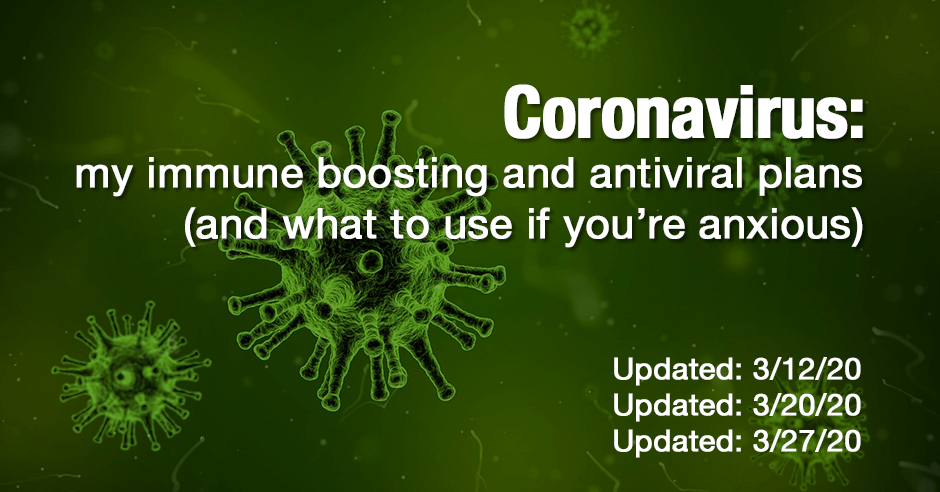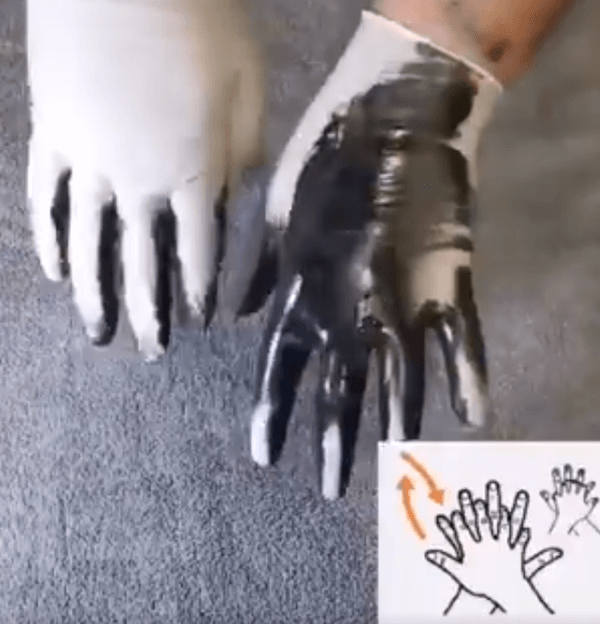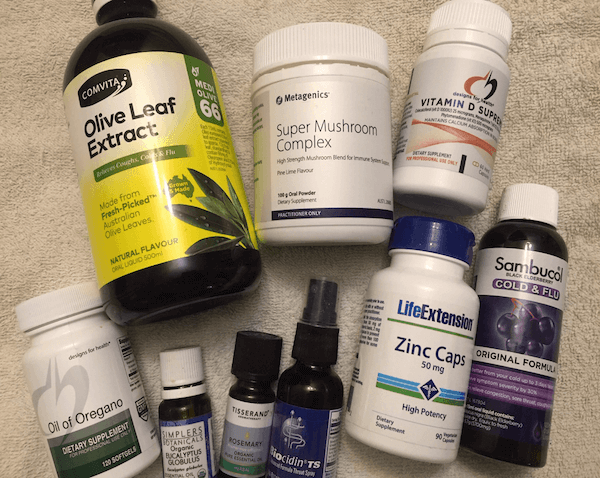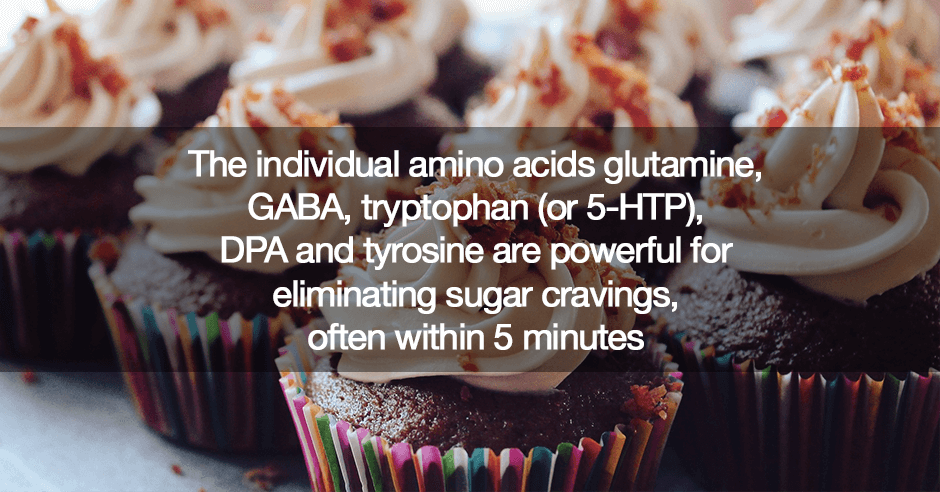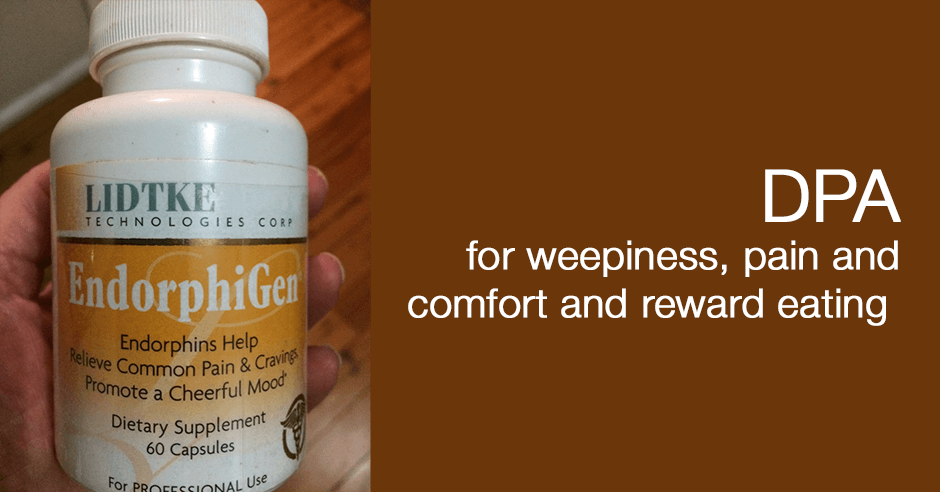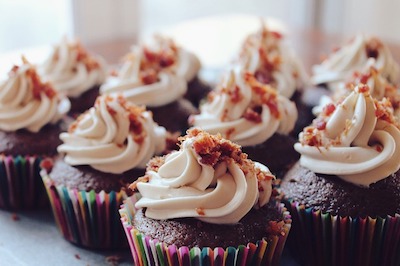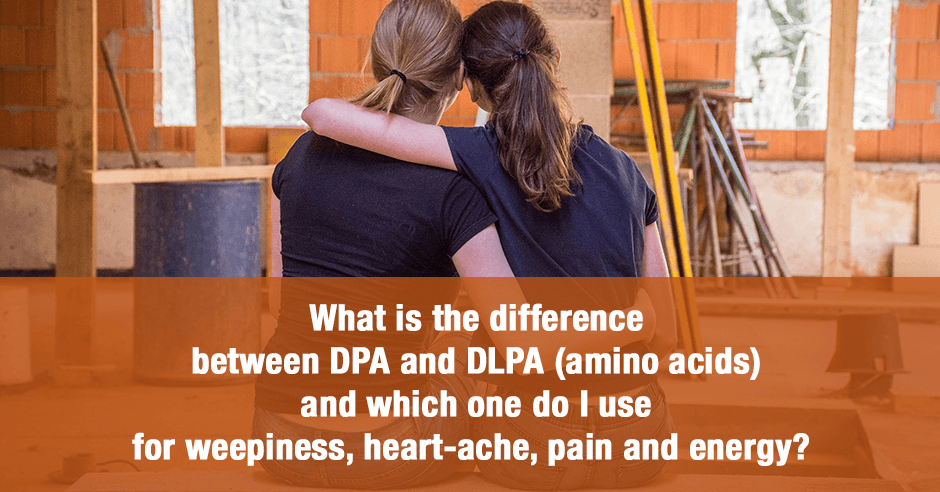
Today we address a very common question I get: “What is the difference between DPA and DLPA?” The follow-up question is this: “And what symptoms do they help with?” These are both amino acids that help to boost certain feel-good neurotransmitters. DPA (d-phenylalanine) supports endorphins, whereas DLPA (dl-phenylalanine) supports both endorphins (to a lesser extent than DPA) and catecholamines (to a lesser extent than tyrosine).
Depending on your imbalances and symptoms, they could help with weepiness, heart-ache, comfort eating, emotional support, pain relief, better focus and energy, and even improved motivation.
I mostly recommend DPA (which I call a-hug-in-a-bottle) and share the reasons why below, but some people do really well with DLPA. It’s a matter of figuring out the best one and dose for your unique needs.
DPA for low endorphin symptoms
DPA (d-phenylalanine) is an amino acid that destroys the enzyme that breaks down endorphins. Endorphins are feel-good chemicals that you experience with an endorphin rush when you go for a run or when someone gives you a big hug, when you show kindness to someone or an individual does something nice for you.
Taking the amino acid, DPA, as a supplement helps to raise your endorphins and helps when you feel weepy and overly emotional and reduces the need to self-medicate with treats as a reward or for comfort.
This amino acid is a favorite with so many of my clients and community because it makes them feel so lovely … a warm and fuzzy feeling. I often call it a-hug-in-a-bottle!
Here are the low endorphin symptoms I have my clients rate if they are considering a trial of DPA:
- Heightened sensitivity to emotional pain
- Heightened sensitivity to physical pain
- Crying or tearing up easily
- Eating to soothe your mood, or comfort eating
- Really, really loving certain foods, behaviors, drugs, or alcohol
- Craving a reward or numbing treat
Tyrosine for low catecholamine symptoms
Tyrosine is the amino acid that boosts catecholamines and helps with focus, motivation, energy (especially when you crave carbs for energy) and the blah kind of depression. It’s wonderful for helping you easily quit coffee/caffeine (when you are using it to “self-medicate” due to low catecholamines). It also provides support for the thyroid.
Here are the low catecholamine symptoms I have my clients rate if they are considering a trial of the amino acid tyrosine:
- Depression and apathy
- Easily bored
- Lack of energy
- Lack of focus
- Lack of drive and low motivation
- Attention deficit disorder
- Procrastination and indecisiveness
- Craving carbs, alcohol, caffeine, or drugs for energy
DLPA for both low endorphin and low catecholamine symptoms
If someone has both low endorphin and low catecholamine symptoms, a trial of DLPA could be considered. DLPA supports both endorphins (to a lesser extent than DPA alone) and also catecholamines (to a lesser extent than tyrosine used alone). You could think of it as doing half and half of each.
Low endorphin symptoms:
- Heightened sensitivity to emotional pain
- Heightened sensitivity to physical pain
- Crying or tearing up easily
- Eating to soothe your mood, or comfort eating
- Really, really loving certain foods, behaviors, drugs, or alcohol
- Craving a reward or numbing treat
And low catecholamine symptoms:
- Depression and apathy
- Easily bored
- Lack of energy
- Lack of focus
- Lack of drive and low motivation
- Attention deficit disorder
- Procrastination and indecisiveness
- Craving carbs, alcohol, caffeine, or drugs for energy
Why I prefer my clients use DPA and tyrosine, rather than DLPA
Many people do well with DLPA (you can read one example below) but over the years I have streamlined my amino acid recommendations and seldom suggest DLPA. Here are the reasons why I prefer DPA:
- DPA is not stimulating and doesn’t affect sleep. However, DLPA can be stimulating for anxious folks (and the majority of my clients have anxiety). For this reason, DLPA can not be used later than 3pm as it can affect sleep and for some folks with really bad sleep issues it can’t be tolerated later than mid-morning (in a similar way to tyrosine).
- I like to have clients use DPA alone so we can clearly identify the benefits they are experiencing for their low endorphin symptoms and then use tyrosine alone so we can clearly identify their low catecholamine benefits.
- There are no precautions or contraindications with DPA. However, DLPA has the same precautions as tyrosine. This limits using it for endorphin support. These are the precautions:
- Overactive thyroid/Grave’s disease: tyrosine, DLPA (avoid)
- Phenylketonuria (PKU): tyrosine, DLPA (avoid)
- Melanoma: tyrosine, DLPA (avoid)
- High Blood pressure: tyrosine, DLPA (watch)
- Migraine headaches: tyrosine, DLPA (watch)
- Bipolar disorder: tyrosine, DLPA, glutamine (watch)
- The women I work with who do have low endorphin symptoms have reported superior benefits from DPA compared to DLPA, especially for emotional pain and emotional eating.
- Some folks can’t tolerate tyrosine and these same folks have a hard time with DLPA.
The one disadvantage with DPA is that it’s not as widely and readily available as DLPA. It often needs to be purchased online (I list some brands below).
Here is some feedback from folks to give you an idea how these amino acids have helped them.
As you’ll see, there are some individuals who do well with DLPA so it’s really a matter of looking at the symptoms and doing a trial.
DPA helps Missy with weepiness and a deep heart-ache (and tastes like dark chocolate)
Missy shares how DPA helped her deep heart-ache sort of feeling:
I have found I was using this product incorrectly. If you are feeling fine, you do not feel much of anything from it. But today I was weepy and felt that deep, heart-ache sort of feeling. I chewed 1000 mgs (2 capsules) and it DID help lift that awful feeling within 15 minutes.
Notice that she said if you’re feeling fine you don’t feel much at all. This is true of all the amino acids – they only make a difference when you need them.
Missy said that she chewed the capsule, however around 2019, the gelatin capsule was replaced with a cellulose capsule. It’s much more palatable when it’s opened up into the mouth. I blog more about opening the capsule here.
She also reported what about half my clients say:
Tastes like slightly bitter dark chocolate 🙂
The remainder of my clients don’t like the taste at all, although many say the taste grows on them. I’ve always been in the dark chocolate camp and find it quite pleasant tasting.
DLPA helps Toby with energy and pain relief (he has CFS and fibromyalgia)
Toby has a diagnosis of CFS (chronic fatigue syndrome) and fibromyalgia and shared how DLPA helps him:
I’ve played around with (I think) all variations of these aminos and have found unequivocally (in the sense of definite and fast observable changes as opposed to none) that DLPA is the one that works for me. I have wondered what that means. I am male, 45, diagnosed with CFS and fibromyalgia and have speculated that in lay terms the DLPA gives me a bit of energy and pain relief (endorphins). Is that a logical conclusion?
He posted an image of the DLPA product he used and said this:
After putting it on my tongue, very quickly I get an agreeable boost in energy and pain relief. I have not experienced this with DPA or tyrosine.
Based on what I’ve covered above with the symptoms you can see that Toby has made a very logical conclusion. He is getting both endorphin support (the pain relief) and catecholamine support (the energy).
Resources if you are new to using DPA or DLPA as supplements
If you are new to using the amino acids DPA or DLPA as supplements, here is the Amino Acids Mood Questionnaire from The Antianxiety Food Solution (you can see the low endorphin and low catecholamine symptoms.)
If you suspect low levels of endorphins and/or low levels of catecholamine and do not yet have my book, The Antianxiety Food Solution – How the Foods You Eat Can Help You Calm Your Anxious Mind, Improve Your Mood, and End Cravings, I highly recommend getting it and reading it before jumping in and using amino acids on your own so you are knowledgeable. And be sure to share it with the team you or your loved one is working with. Blog posts like this are intended to add value to the chapter on amino acids, which contains detailed information on doses and time of the day for dosing.
The book doesn’t include product names (per the publisher’s request) so this blog, The Antianxiety Food Solution Amino Acid and Pyroluria Supplements, lists the DPA and DLPA products that I use with my individual clients and those in my group programs.
For DPA I have used the Lidtke Endorphigen product for years and it’s a firm favorite with my clients (and I’ve used it myself).
I recently purchased a bottle of Doctor’s Best D-Phenylalanine to test and it works just as well as the Lidtke product.
If you are a practitioner, join us in The Balancing Neurotransmitters: the Fundamentals program. It’s an opportunity to interact with me and other practitioners who are also using the amino acids.
Do you have any of the low endorphin and/or low catecholamine symptoms and have you seen benefit with DPA, DLPA and/or tyrosine? If yes, please share what benefits.
Has this blog provided clarification on DPA vs DLPA, and will you be changing how you use these amino acids going forward?
If you’re a practitioner please share what you use with clients/patients.
Feel free to ask your questions here too.
